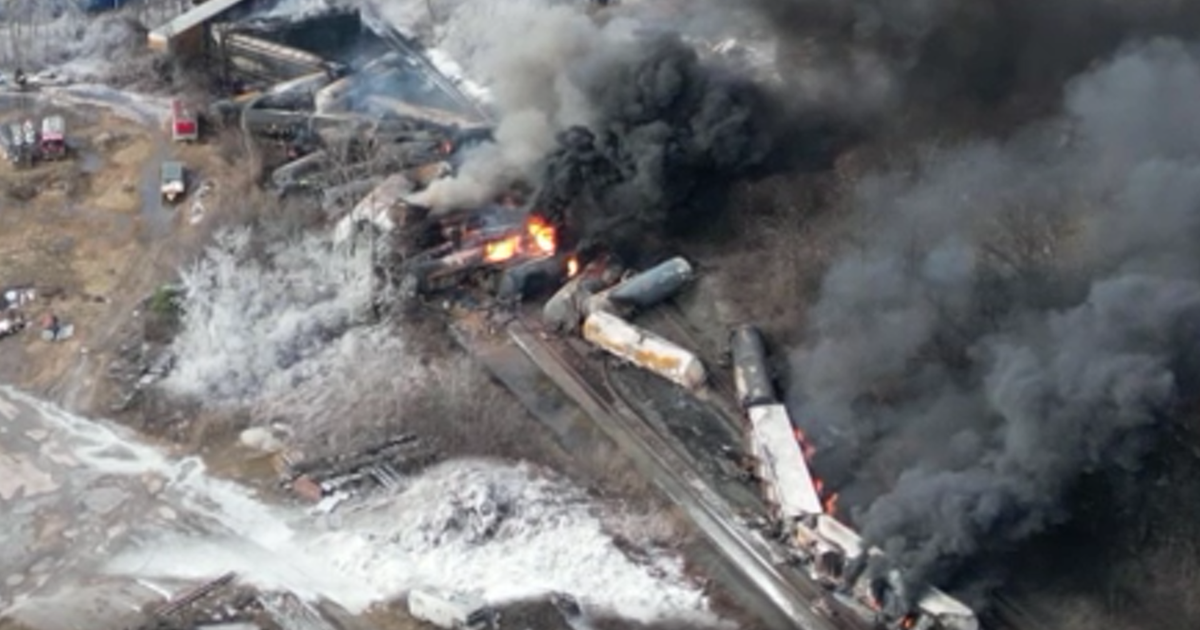Lingering Effects: Toxic Chemicals From Ohio Train Derailment Remain In Buildings

Table of Contents
Types of Toxic Chemicals and Their Persistence
The derailment released a cocktail of hazardous substances, including vinyl chloride, butyl acrylate, and ethylhexyl acrylate. These chemicals pose significant threats due to their toxicity and persistence in the environment.
-
Vinyl chloride: Known to be carcinogenic and linked to liver cancer, vinyl chloride is a volatile organic compound (VOC) that readily evaporates. However, it can also adsorb onto surfaces within buildings, leading to long-term off-gassing. Its environmental half-life varies depending on environmental conditions but can persist for extended periods.
-
Butyl acrylate and Ethylhexyl acrylate: These acrylates are also VOCs, irritants to the eyes, skin, and respiratory system. They can persist in building materials like fabrics, carpets, and porous surfaces, potentially releasing harmful vapors for months or even years after the initial contamination event.
-
Chemical Persistence and Detection: The challenge lies in the potential for long-term off-gassing. Low levels of these chemicals can be difficult to detect using standard methods, requiring specialized equipment and expertise. Understanding the environmental half-life of each chemical in different building materials is crucial for effective remediation strategies. The persistence of these chemicals in various building materials (wood, drywall, fabrics) makes complete decontamination challenging.
Contamination Pathways into Buildings
The toxic chemicals from the Ohio train derailment entered buildings through various pathways:
-
Air Contamination: The initial release created a large plume of airborne contaminants. Open windows, ventilation systems, and even cracks in building structures allowed these chemicals to infiltrate homes and businesses. Airborne deposition of these chemicals onto surfaces within buildings is another significant pathway.
-
Water Contamination: Surface water and groundwater contamination poses a risk for indirect indoor contamination. Contaminated water used for cleaning, or even groundwater seepage into basements, can introduce these chemicals into buildings.
-
Soil Contamination: Soil near the derailment site became contaminated. Tracking contaminated soil into buildings on shoes, equipment, or even through ground seepage into foundations contributes to indoor contamination.
-
Building Ingress Points: Poorly sealed windows and doors, cracks in foundations, and gaps around pipes and utilities provide entry points for contaminated air, water, and soil. These entry points need to be identified and sealed during the remediation process.
Health Impacts of Lingering Chemicals
Exposure to the chemicals released in the Ohio train derailment can have serious short-term and long-term health consequences:
-
Respiratory Problems: Exposure to these VOCs can cause irritation of the eyes, nose, throat, and lungs, leading to coughing, wheezing, shortness of breath, and potentially more severe respiratory illnesses.
-
Neurological Effects: Some of these chemicals are known neurotoxins, potentially causing headaches, dizziness, confusion, and other neurological symptoms.
-
Cancer Risk: Vinyl chloride, in particular, is a known carcinogen, increasing the risk of various cancers, including liver cancer.
-
Reproductive Health: Exposure to certain chemicals can negatively affect reproductive health in both men and women.
-
Vulnerable Populations: Children, the elderly, and individuals with pre-existing respiratory or other health conditions are particularly vulnerable to the harmful effects of these chemicals. Accurate exposure assessment is crucial but challenging given the complex mixture of chemicals involved.
Cleanup and Remediation Efforts
Decontaminating buildings affected by the Ohio train derailment presents significant challenges:
-
Building Decontamination: Effective decontamination requires a multi-pronged approach, potentially including air filtration, surface cleaning, and the removal and replacement of severely contaminated materials.
-
Air Quality Testing: Thorough air quality testing is essential to identify the presence and concentration of volatile organic compounds within buildings. This testing informs the appropriate remediation strategy.
-
Water and Soil Remediation: Addressing water and soil contamination around affected buildings is crucial to prevent further indoor contamination.
-
Regulatory Response: Regulatory agencies play a vital role in overseeing cleanup and remediation efforts, ensuring compliance with environmental regulations and protecting public health.
Conclusion:
The lingering effects of the toxic chemicals from the Ohio train derailment pose significant long-term health risks. The persistence of these chemicals in building materials highlights the urgent need for comprehensive building decontamination, ongoing monitoring, and proactive measures to mitigate potential harm. Understanding the ongoing health risks associated with the Ohio train derailment’s toxic chemical lingering effects is paramount. Stay informed about the latest developments and advocate for thorough testing and remediation in East Palestine and neighboring communities. Continue to monitor news and research to protect your family and community.

Featured Posts
-
 Wildfire Betting A Grim Reality In Los Angeles And Beyond
Apr 23, 2025
Wildfire Betting A Grim Reality In Los Angeles And Beyond
Apr 23, 2025 -
 Major Office365 Data Breach Exposes Executives Results In Millions Stolen
Apr 23, 2025
Major Office365 Data Breach Exposes Executives Results In Millions Stolen
Apr 23, 2025 -
 How Ai Is Reshaping Wildlife Conservation A Double Edged Sword
Apr 23, 2025
How Ai Is Reshaping Wildlife Conservation A Double Edged Sword
Apr 23, 2025 -
 Dominique Carlach Et Sa Carte Blanche Parcours Et Influences
Apr 23, 2025
Dominique Carlach Et Sa Carte Blanche Parcours Et Influences
Apr 23, 2025 -
 Cincinnati Reds Drop Third Straight 1 0 Game
Apr 23, 2025
Cincinnati Reds Drop Third Straight 1 0 Game
Apr 23, 2025
